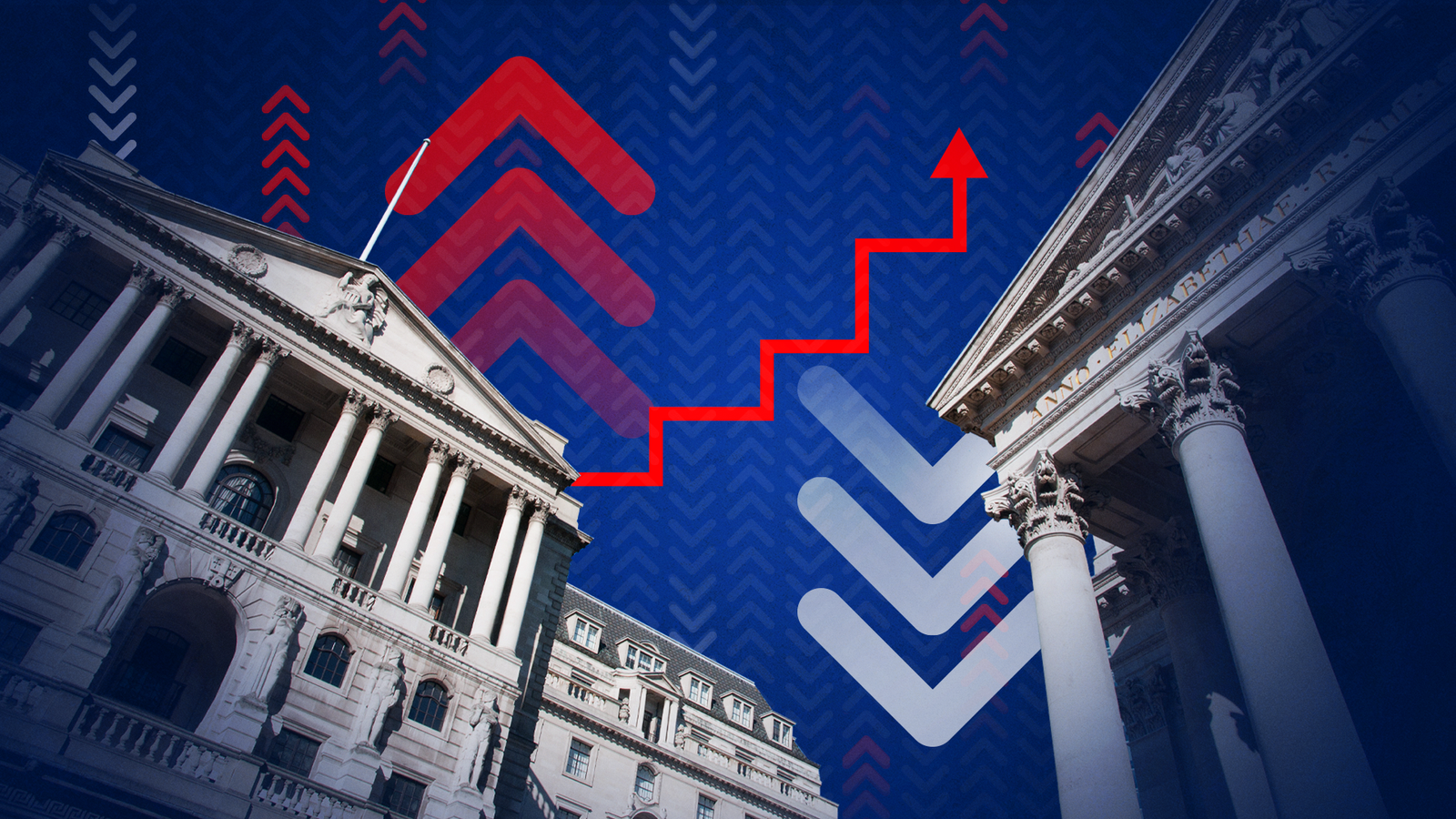
The Bank of England has raised interest rates for the fourteenth successive time, lifting its official rate to 5.25%.
The quarter percentage point increase was somewhat smaller than some economists had expected, following the release of lower-than-anticipated inflation data last month.
“Inflation is falling and that’s good news,” said the Bank’s governor Andrew Bailey.
“We know that inflation hits the least well off hardest and we need to make absolutely sure that it falls all the way back to the 2% target. That’s why we’ve raised rates to 5.25% today.”
However, while the Bank’s forecasts do not imply a recession in the coming years, they paint the picture of an economy which is both weaker than previously forecast and effectively flatlining all the way through to 2026.
This is, said the Bank, in large part because of the fact that interest rates are expected to remain at high levels for considerably longer than markets previously anticipated.
Read more
Bank of England hints economic pain felt by many to be a long, drawn-out affair
While the Bank itself doesn’t deliver its own interest rate forecasts, it dropped a heavy hint that it does expect borrowing costs to stay high for some time, saying in the minutes to its policy meeting that: “The [Monetary Policy Committee] would ensure that Bank Rate was sufficiently restrictive for sufficiently long to return inflation to the 2% target sustainably in the medium term, in line with its remit.”
The nine-person MPC was split on today’s decision, with two members (Catherine Mann and Jonathan Haskel) voting for a bigger increase and one member (Swati Dhingra) voting to keep rates on hold.
However, economists and financial markets are betting on further increases, with markets pricing in a peak of 5.75% or slightly higher.
The Bank’s forecasts indicate that the prime minister is likely to meet his pledge to halve inflation by the end of the year, pointing towards a rate of around 4.9% in the final quarter (the government’s pledge implies a rate of 5.4%).
However, considerably uncertainty remains, with around a 20% chance of a higher figure.
While the Bank’s forecast for gross domestic product (GDP) growth in the year to the third quarter is slightly higher than before (0.8% rather than the 0.6% it forecast in May), it is still far weaker than what would be considered “trend growth”.
Moreover, the GDP forecast for the same period in 2024 was also cut from 0.6% to 0.3%, as was the relevant forecast in 2025 (from 0.8% to 0.3%). All told, they add up to a long period of insipid economic growth.
Chancellor Jeremy Hunt said, “If we stick to the plan, the Bank forecasts inflation will be below 3% in a year’s time without the economy falling into a recession.
“But that doesn’t mean it’s easy for families facing higher mortgage bills so we will continue to do what we can to help households.”
Labour’s shadow chancellor Rachel Reeves said: “This will be incredibly worrying for households across the country.”
“Responsibility for this crisis lies with the Tories. They’ve crashed our economy leaving working people worse off.
“Labour’s plans will boost growth and get bills down.”







